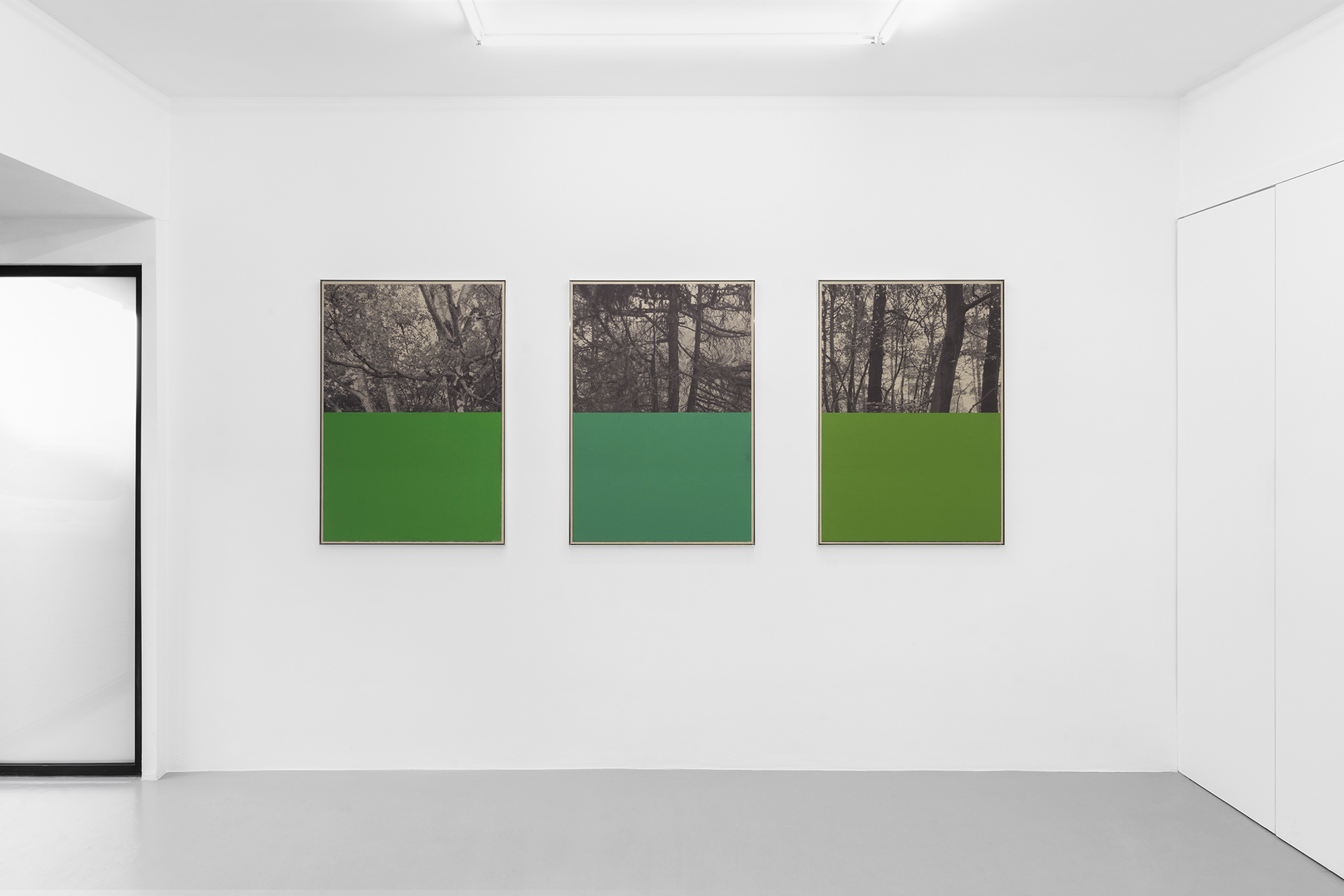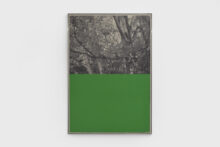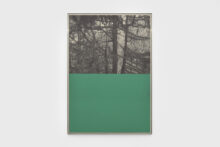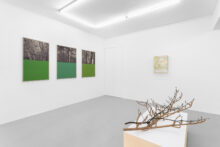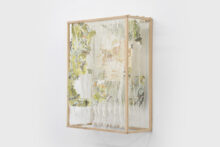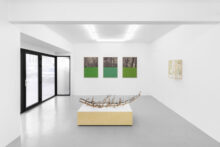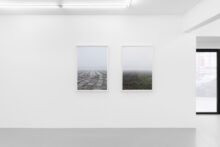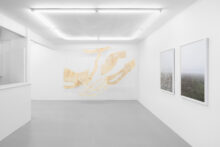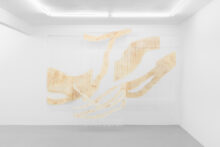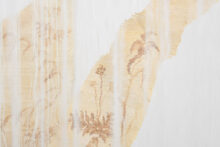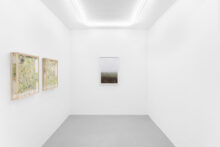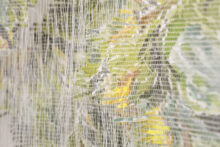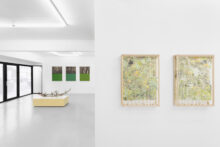Stijn Cole
Elise Peroi
We are delighted to present a dialogue between Stijn Cole and Elise Peroi, with a text written by Ilse Roosens.
Measuring, framing, rendering.
Weaving, painting and overpainting.
Looking, revisiting.
Folding and rupturing, removing and stowing away.
Observing and capturing nature, reduced to its essence – or to an essence at least. The foliage of the trees that we do not only perceive with our eyes, but experience with our whole body. The rustle in our ears, the prickle on our skin, the blinding beauty of the outlines that fade and sharpen, constantly, every second and always differently. Fast and yet slow. Time is different in the forest, in the landscape. Our breathing falters, quickens, becomes quiet. Countless thoughts and yet none. Countless movements, yet also ultimate silence.
We are small observers in that vast nature. Some painters and photographers aspire to present the landscape in an orderly fashion, with a clear horizon as a point of reference. They attempt to capture its immensity, to master it as a means of reassurance. The viewer understands the picture: land and sky, neatly separated. However, like a giant forest, flatness can be overwhelming. Even the greatest painting or the most engaging photograph will only be a simulacrum of nature. Yet, everywhere and always, we will strive to depict the landscape in a way that transcends or at least equals our real experience.
Elise Peroi and Stijn Cole have no intention of making nature clear or comprehensible. Yet for them, there is nothing more engaging than the landscape, which they take as a starting point for their artistic reflection. Peroi portrays the dance of nature, a process that takes place 360 degrees around us and which we can only witness in fragments. The dance is so ancient and so vast that our human imagination falls short. It is precisely that inability to get a grip on the environment that inspires Peroi. She paints plants and forests, destructuring the picture and then reassembling it. The fragments become building blocks for a new landscape which then opens up here and there like a forest where the sun’s rays occasionally shine through.
“The forest is like breathing,” Peroi says, “constantly in motion.” She transforms its immensity into tactile works that engage the environment through their volume and transparency. In contrast, Stijn Cole’s work is more delineated, stemming from his highly precise methodology. Whereas Peroi translates the incomprehensible into an intuitive and lyrical form, with Cole the poetic beauty arises from establishing and measuring. His perception, including registered colours and his own eye level, are starting points for his capture of nature. “I am not searching for sentiment,” Cole clarifies. Although there are often personal memories linked to his artworks, it is the distances, moments in time and locations that he names. Regardless, the apparent simplicity of those elements coalesces into a kind of essential sensation that connects us when contemplating nature.
And even if rendering the horizon is a small yet fraught gesture, Cole is happy to confront it. For his series Fold (2023), he travelled to places where, at the time, the horizon was invisible to the human eye. He aligned the camera lens with his own gaze, then folded his shot of the landscape in half to create an imaginary horizon. In turn, the Untitled (2023) series presents a dichotomy between an abstract and a figurative plane that hints at a horizon line, but in which Cole transforms the lower half of the image. Like Peroi, he seeks to bring the tactile aspect of nature into his work. Where the materiality of the landscape disappears in the photographic image, the successive layers of green paint bring us closer to the dancing forest.
What both artists do is capture, edit and present fragments of that forest. They work with it like gardeners, digging in the soil to then sow and plough. They work in and with that overwhelming nature. For the forest is seen, admired, ploughed, harvested, everywhere and again.
– Ilse Roosens
Ilse Roosens is a curator currently working at Mu.ZEE in Ostend (BE), the museum for modern and contemporary Belgian art. Post-colonial, geopolitical, ecofeminist and post-capitalist topics lay the groundwork for her work both inside and outside the museum. Ilse Roosens questions existing power structures and focuses on the social responsibility of institutions, governments and artists. Co-authorship and polyphony are focal points of her working ethic. She is actively rethinking the formats for presenting collections by experimenting with transhistorical and transcultural concepts. She published several catalogues and curated different public programmes accompanying the exhibitions. In 2018 she co-founded the MEER curatorial collective, focusing on artists working with video and performance art. Prior to Mu.ZEE she worked at S.M.A.K. Ghent and Extra City Kunsthal in Antwerp and as a freelance curator and mediator.
PRESS:
Avec Stijn Cole et Elise Peroi dans le paysage, Jean-Marie Wynants in MAD Le Soir, 24.01.24 (FR)
Opening Thursday 11.01.24, 5pm – 9pm
Exhibition until Saturday 17.02.24
Included in the PhotoBrussels Festival
Location
Irène Laub gallery
29 rue Van Eyck
1050 Brussels (BE)
Read more about Stijn Cole and Elise Peroi
